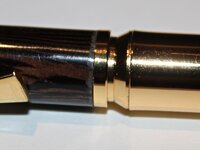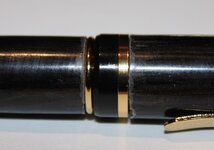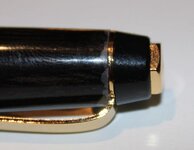It seems to me that, the CA may no have adhere to the wood as it was suppose to. If the wood is oily, you need to wipe the wood with acetone before the CA is applied, making sure no fingers are rubbed on the bare wood.
The second issue, may be the CA that gets stuck to the bushings and with the attempts to separate them, have lifted the CA out of the ends.
BUT, what I thing the major problem is here is that, the ends of the barrels after the CA is applied, have not been sanded right, where some CA is still hanging over the wood edge and when you push/press the kit fittings tight, the CA is simply compress back and therefore separate from the wood.
This is even a bigger problem when the CA doesn't adhere to the wood as it should, it want take much the "flake" it, a simple pen drop or hitting hard surface will dislodge/separate the CA layers from the wood...!
Cheers
George



